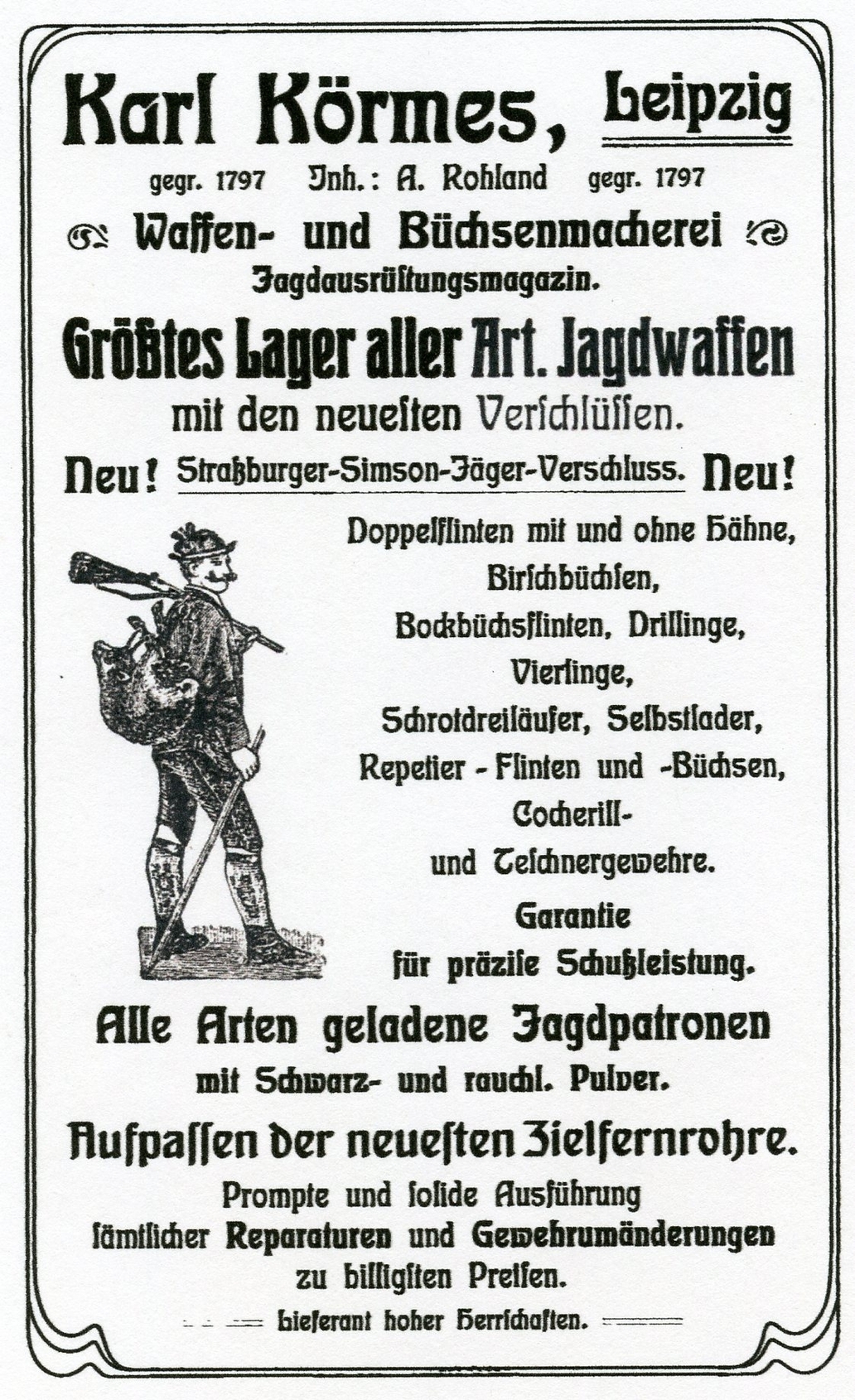Jaeger, Franz
Jäger, Franz
The complete story of the Kersten, Jäger/Jaeger and Apel gun makers is now available as an Ebook on a CD in PDF format titled “The Jäger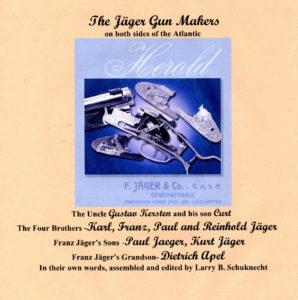 Gun Makers”. It was assembled and edited by Larry B. Schuknecht from all of the vast archives of the Apel family. It contains 29 chapters, approximately 685 pages with over 900 images. It is in two parts: “Part One- The lives and Times” and “Part Two- The Patents, Firearms and Accessories”. The biographical material covers the uncle Gustav Kersten and his son Curt, the four brothers- Karl, Franz, Paul and Reinhold Jäger, Franz Jäger’s sons Paul Jaeger and Kurt Jäger and Franz Jäger’s grandson Dietrich Apel. It also has chapters about the Willig family of engravers and some notes about the Weisbaden Rod & Gun Club. There are also three files of original archival material. Click HERE to go to my web site- www.dutchmanwoodworks.com to read more about the ebook or read a review of the ebook by Dietrich’s good friend Mr. John Neumann or for details on how to purchase the ebook.
Gun Makers”. It was assembled and edited by Larry B. Schuknecht from all of the vast archives of the Apel family. It contains 29 chapters, approximately 685 pages with over 900 images. It is in two parts: “Part One- The lives and Times” and “Part Two- The Patents, Firearms and Accessories”. The biographical material covers the uncle Gustav Kersten and his son Curt, the four brothers- Karl, Franz, Paul and Reinhold Jäger, Franz Jäger’s sons Paul Jaeger and Kurt Jäger and Franz Jäger’s grandson Dietrich Apel. It also has chapters about the Willig family of engravers and some notes about the Weisbaden Rod & Gun Club. There are also three files of original archival material. Click HERE to go to my web site- www.dutchmanwoodworks.com to read more about the ebook or read a review of the ebook by Dietrich’s good friend Mr. John Neumann or for details on how to purchase the ebook.
The German Gun Collectors Association has a Franz Jäger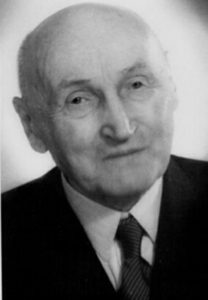 & Co. catalog reprint available for purchase. Click here to go to thier site and to view what they have to offer. Also the web site https://shotguncollector.com has a pdf of a Heinrich Barella Catalog available for viewing, the second half of which is a Catalog for Franz Jäger. Click here to view that pdf.
& Co. catalog reprint available for purchase. Click here to go to thier site and to view what they have to offer. Also the web site https://shotguncollector.com has a pdf of a Heinrich Barella Catalog available for viewing, the second half of which is a Catalog for Franz Jäger. Click here to view that pdf.
Click here to view the 1908 Franz Jäger & Co. catalog.
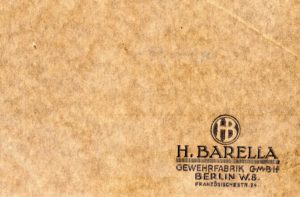 Click here to view a 1912/13 Franz Jäger & Co. catalog.
Click here to view a 1912/13 Franz Jäger & Co. catalog.
Click here to view a Franz Jäger catalog no. 35
JAEGER
Franz Jaeger (Jäger) 1876 – 1957
Gunsmith – Manufacturer – Inventor

Friesenstr. 17 (formerly Pfiffergrube).
Suhl – Thuringia – Germany
- Jäger & Co. Trade Mark Herold
Manufacturer of all types of hunting guns.
Despite the fact that fate did not bring Franz Jäger much recognition or riches during his lifetime, his inventions still play an important role in the guns of today.
He was born on a farm in 1876 and grew up with nine brothers and sisters in Rampitz, in Merseburg County. Since only one son could take over the farm, the others had to make their own fortune in the world. Franz Jäger’s mother was the sister of Gustav Kersten, a military gunsmith, inventor and armorer in the Prussian Army. Not only was he an example for Franz Jäger, but he also found him an apprenticeship as an actioner in Zella Mehlis.
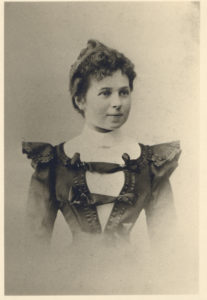
As a young journeyman Franz opened his own gun shop in Halle. This venture was not successful so he decided to try his luck in America. He found employment as a gunsmith in New York, and it was there that he met and married Fanny Strauss who had also come from Germany. Their first son, Paul, was born there. It was here that he began to develop his own ideas and he took out his first patent for a single trigger mechanism. Again he opened his own business with a partner (Bittiner & Jaeger) on Broadway in New York.
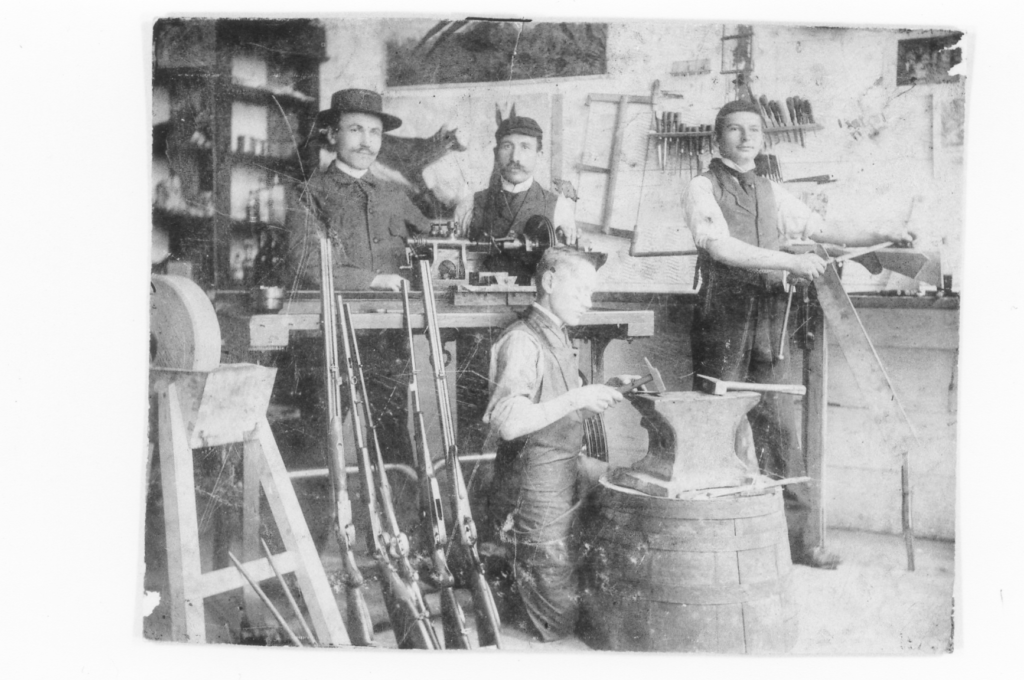
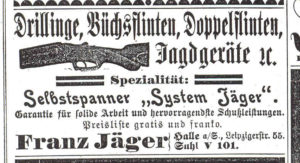
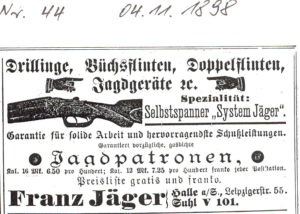
After a few years the family returned to Germany and settled in Suhl. Franz rented a workshop and installed single triggers for other manufacturers and to gun owners through a network of gun dealers. His business flourished and the Jägers could soon rent a nice house with a better shop in the Schleusinger Strasse.
In short succession between 1901 and 1914 Franz Jäger obtained eight patents. He  hired gunsmiths and his shop was soon too small. A retired druggist who had a love for guns, Mr. Luedecke, became a partner and helped finance a new factory that was built at Pfiffergrube 17 (later Friesenstrasse). Mr. Lüdecke built a Villa next door and wanted to work part time as a business manager. The buildings were hardly completed when Mr. Lüdecke died unexpectedly and his family wanted the invested money to be returned.
hired gunsmiths and his shop was soon too small. A retired druggist who had a love for guns, Mr. Luedecke, became a partner and helped finance a new factory that was built at Pfiffergrube 17 (later Friesenstrasse). Mr. Lüdecke built a Villa next door and wanted to work part time as a business manager. The buildings were hardly completed when Mr. Lüdecke died unexpectedly and his family wanted the invested money to be returned.
The Jäger family moved into an apartment next to the offices in the factory building. Plans for the building of a private home on the same grounds never became a reality. Despite financial problems, the business kept growing. In the years before World War I, Franz Jäger employed more than 50 people. The catalogs of that period showed a wide variety of guns, most of them with Jäger patents.
At the death bed of his father, Franz Jaeger promised that he would take care of the family, especially the youngest brother Reinhold. He kept this promise and not only Reinhold but also brothers Paul and Karl came to Suhl, learned their trade and worked in Franz Jäger’s gun factory.
On Jan. 24, 1906 Paul Jäger of Suhl was issued a D.R.G.M. no. 271727 for a Kipplauf Gewehr.
World War I brought the good times to an end. Reinhold was drafted into the army and Paul, Franz Jäger’s brother, who had volunteered for active duty,lost his life in Flanders in November 1914.
Franz Jäger designed the “Jäger Pistol” in a period of 3 months. It was far ahead of the times and used steel stampings and castings, something unheard of at the time. The army rejected it for official use with one word: “Blech” (sheet metal). Nevertheless, the Jäger factory produced about 15,000 of the pistols which gave work and an income to his employees.
Following is a complete list of all of Franz Jaeger-Jäger’s Patents.
Guide to Patent no. prefixes- US-United States, AT- Austria, GB- Great Britian, DE-Germany
US663,545-Dec. 11, 1900, with Edmund & Carl Bittiner all of New York, Dual Front Trigger-Single trigger (corresponds to GB190012988 & AT9862)
GB19009368- Dec. 31,1900, with Carl Bittiner both of New York, Single Trigger
GB190012988- April 20, 1901, with Carl Bittiner both of new York, Dual Front Trigger (corresponds to AT9862 & US663,545)
US674-843- May 21, 1901- New York, Single Trigger (corresponds to GB190116963 & DE130206)
DE130206- April 29, 1902-Carl Bittiner in N.Y. and Franz in Rampitz, Single Trigger (corresponds to US674,843 & GB190116963)
GB190116963- May 1, 1902, with Carl Bittiner both of New York, Single Trigger 9corresponds to DE130206 & US674,843)
AT9862-Nov.25,1902, with Carl Bittiner, both of New York, Dual Front Trigger (corresponds to GB190012988 & US663,545)
GB190518810- Nov. 23, 1905- Suhl, Double Under Lug (corresponds to DE176578)
DE176578- Oct. 18, 1906-Suhl, Double Under Lug (corresponds to GB190518810)
GB190724887- July 30, 1908- Suhl, Double Barrel lock Up (corresponds to DE209113 & US928,608)
DE209113- April 27, 1909- Suhl, Double Barrel Lock Up (corresponds to GB190724887 & US928,608)
DE210263- May 29, 1909- Suhl, Cocking set up & Lock for Drilling
US928,608-July 20, 1909-Suhl, Double Barrel lock Up (corresponds to DE209113 & GB190724887)
DE229521-Dec.23,1910-Suhl, Bushed Hinge Pin Screw (corresponds to GB19119203 & US1,004,269)
US1,004,269- Sept. 26,1911- Suhl, Bushed Hinge Pin Screw (corresponds to GB19119203 & DE229521)
GB19119203- Sept. 28, 1911- Suhl, Bushed Hinge Pin Screw (corresponds to DE229521 & US1,004,269)
AT52704- 1912 -Suhl, Hinge Design
DE270646- Feb. 21, 1914- Suhl, Shot Shell
DE270647- Feb. 20, 1914- Suhl, Shot Shell
GB191328372- July 30, 1914- Suhl, Shot Shell
AT70691- Dec. 10, 1915- Suhl, Shot Shell
DE420001- 1924- Suhl, Sight
DE556629- 1931- Suhl, Bolting Mechanism
US1,900,818- March 7, 1933, Suhl, Bolt Action & Magazine
DE699358- 1938, Suhl, Pistol Holster
His Ejector Mechanism for a Drilling was protected by a D.R.G.M. and Dietrich was told that there was a Pistol patent but that has not been found.
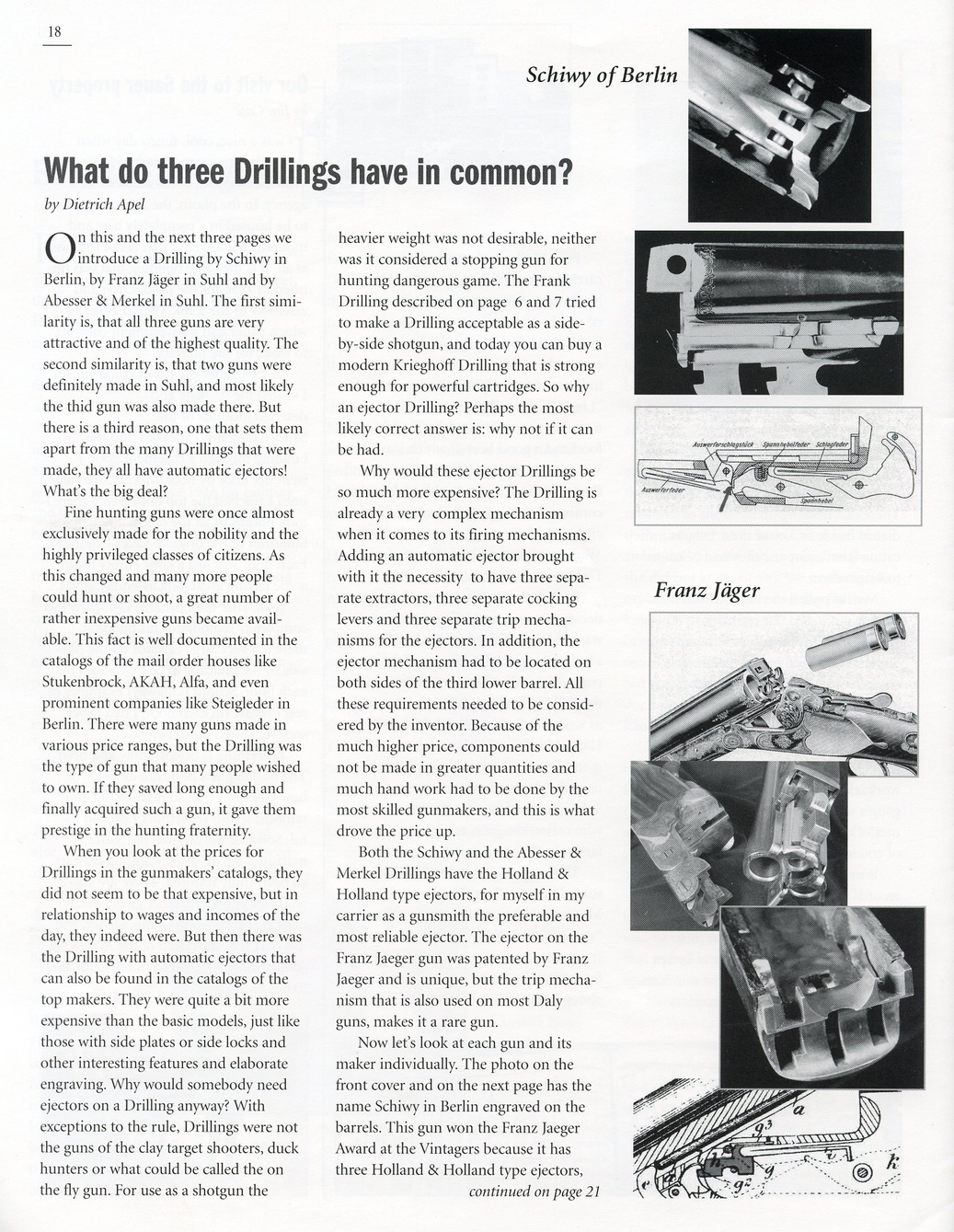
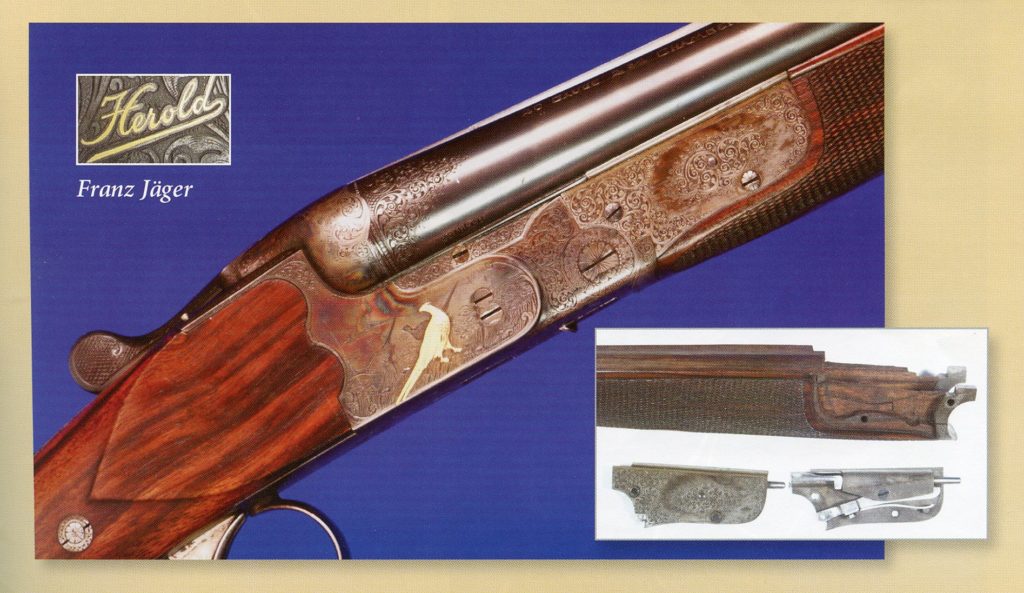
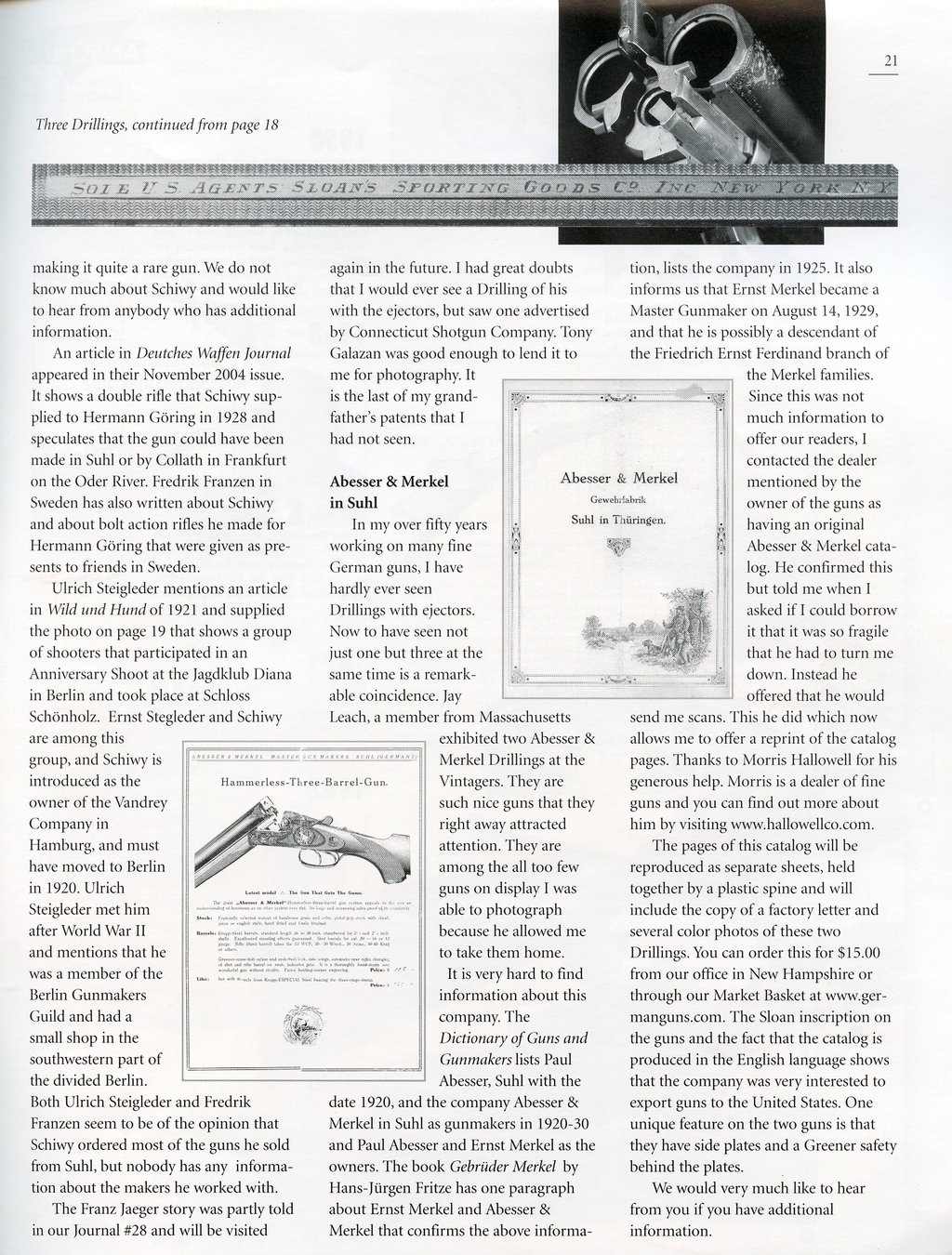
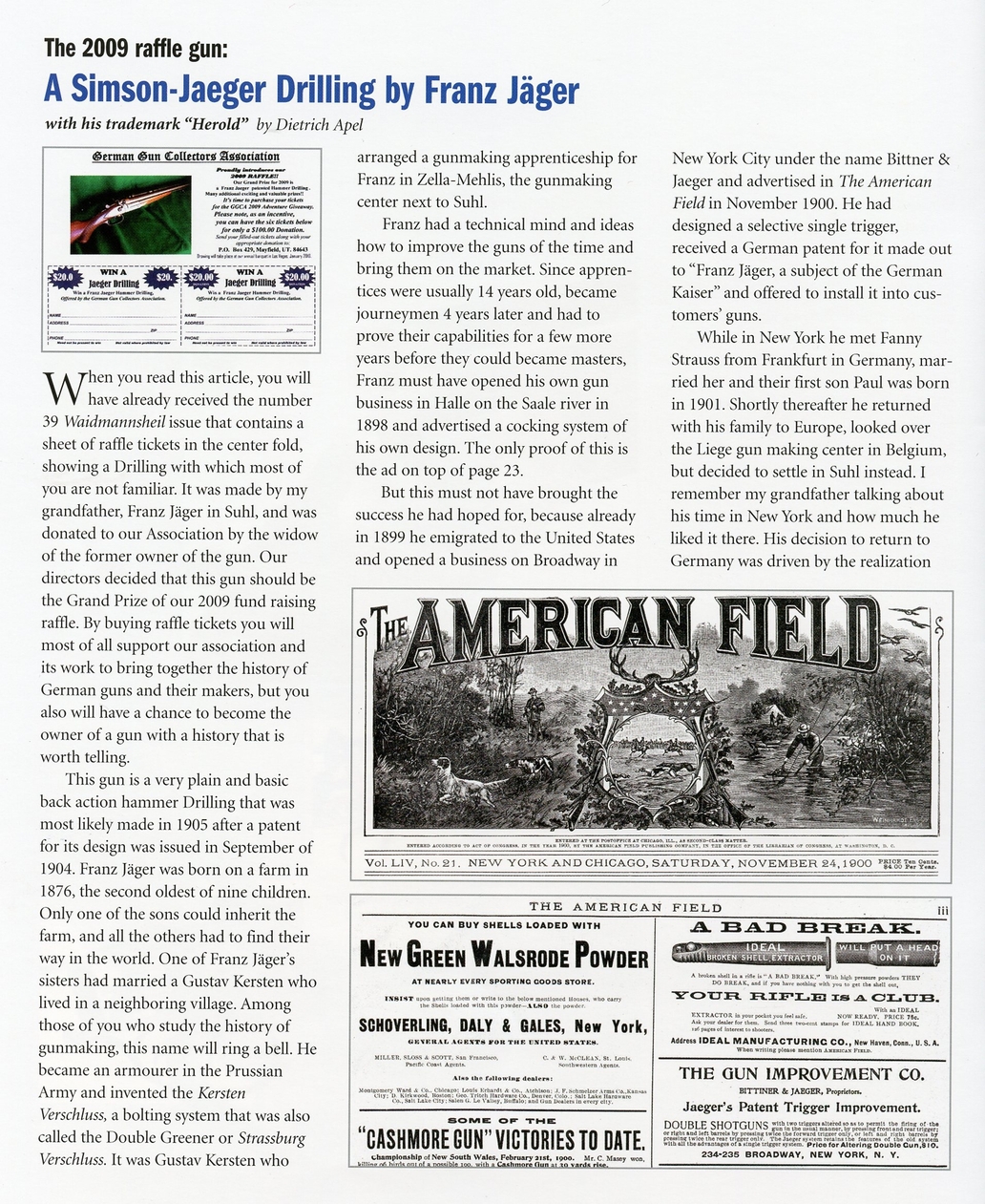
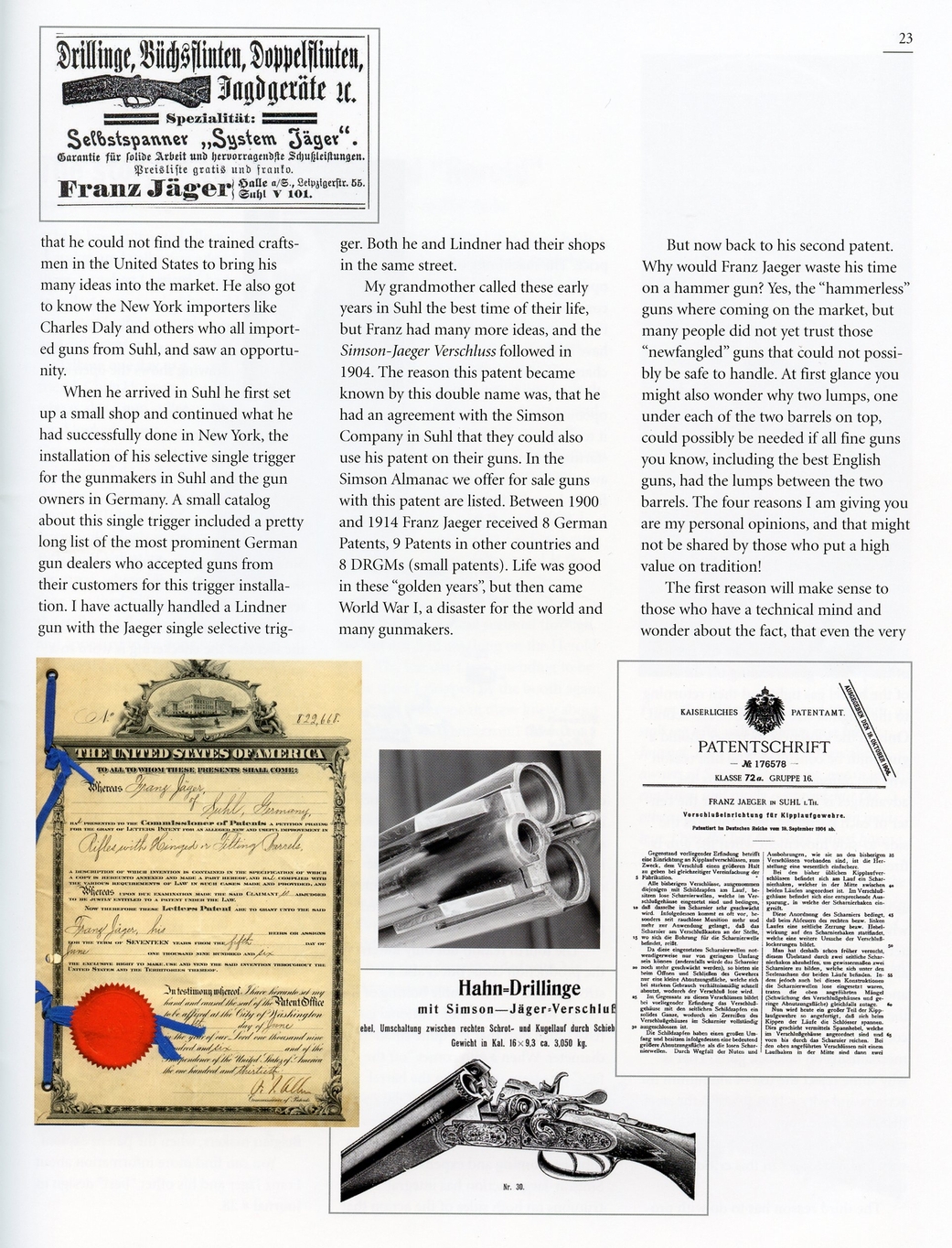
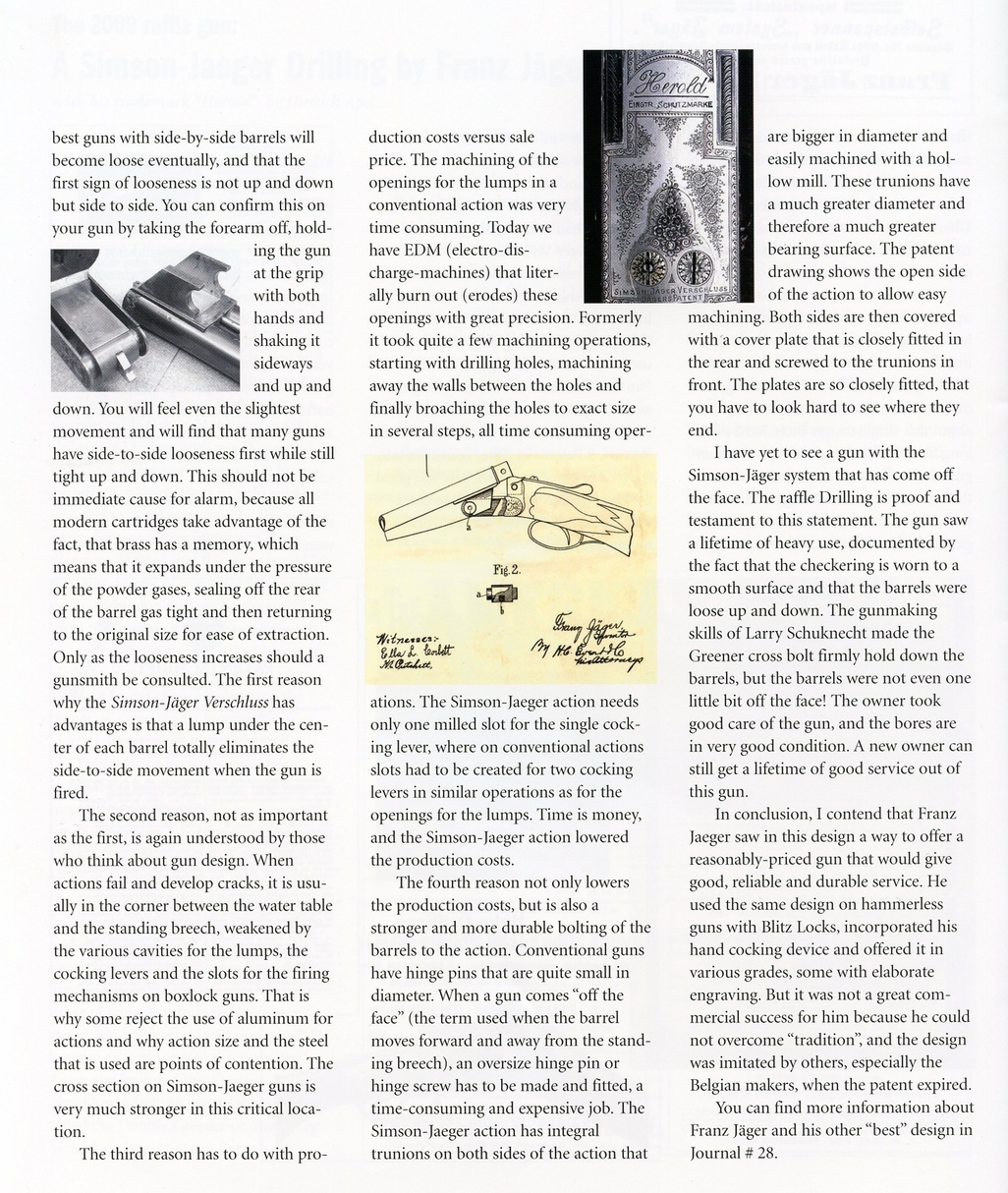
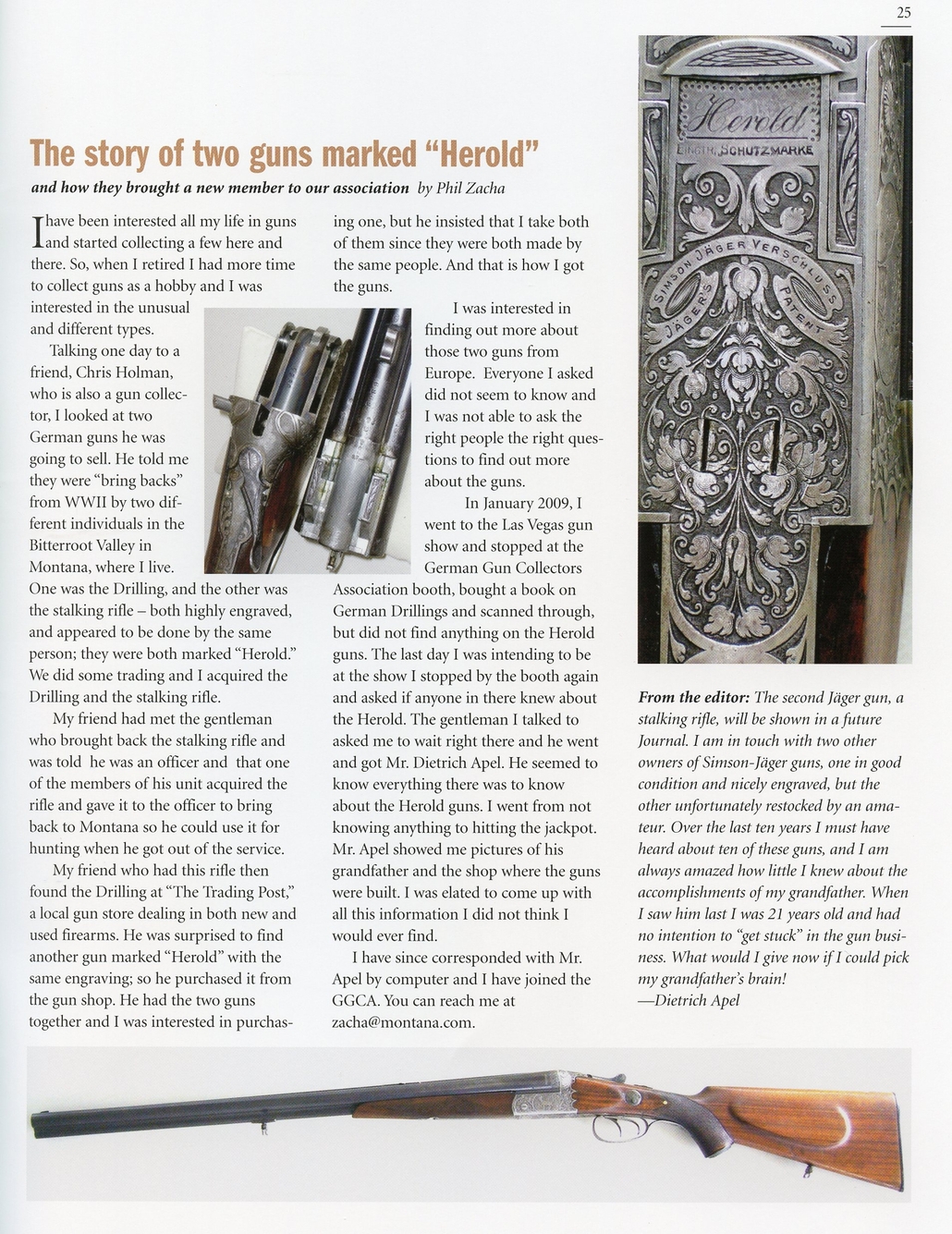
One of Franz Jaeger’s designs was a hinge pin consisting of a screw with a replacable bushing. The design was protected under the German Patent DRP229521 of April 10, 1910 and English Patent no. 9203 of 1911. Below is the German Patent and pictures of two Franz Jaeger drillings with that patented feature. The engraved Drilling was sold by Johann Peterlongo of Austria.
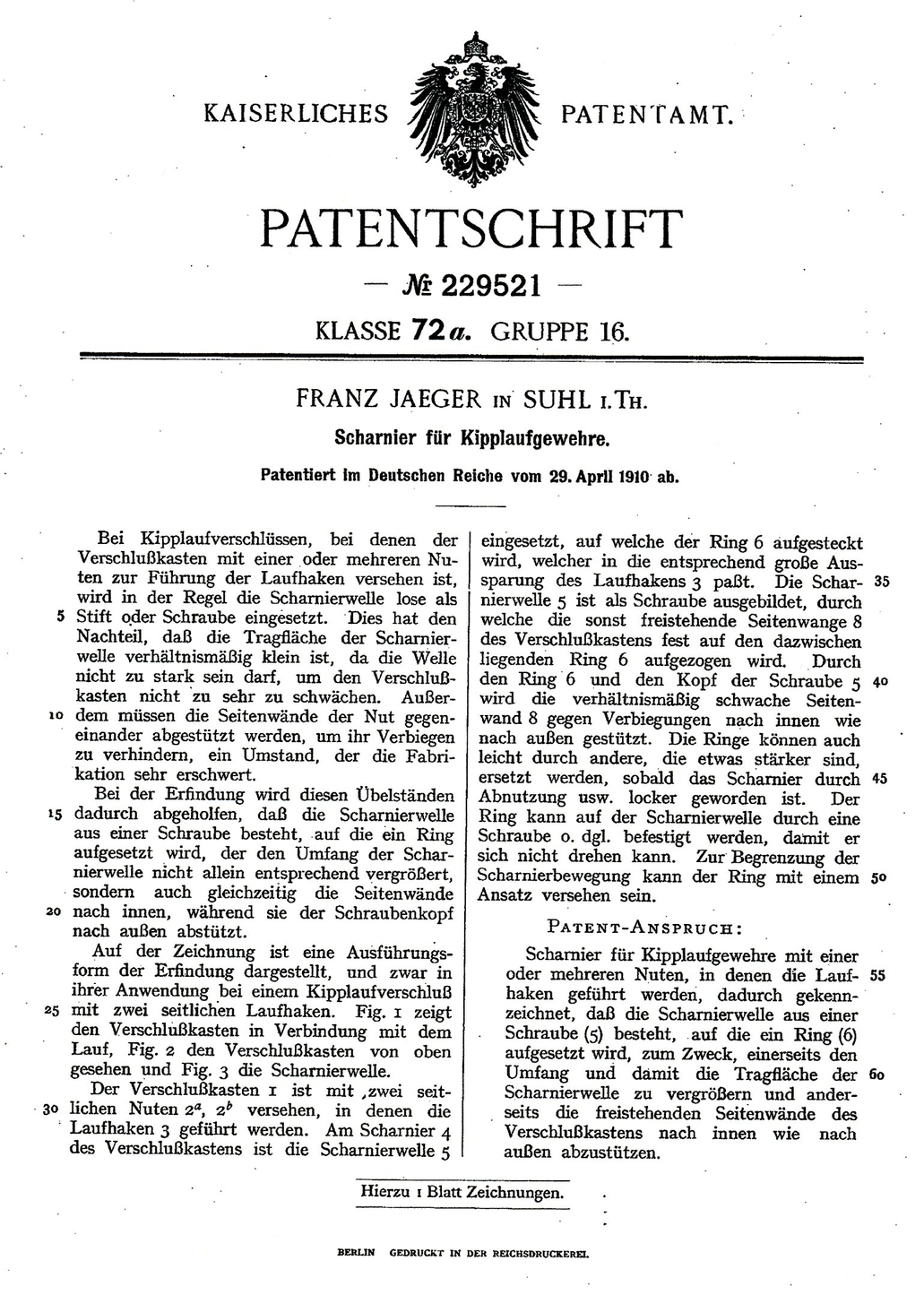
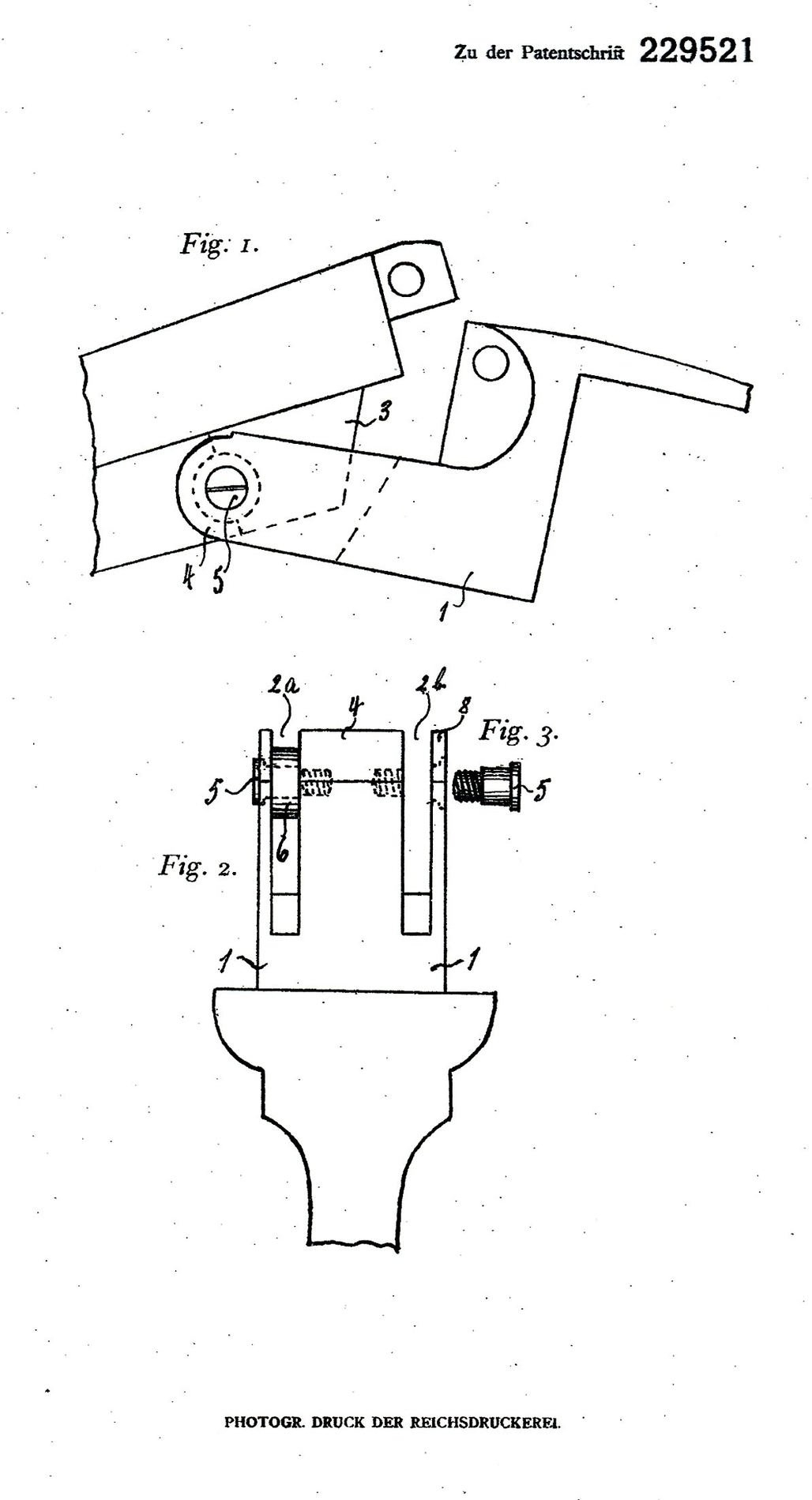

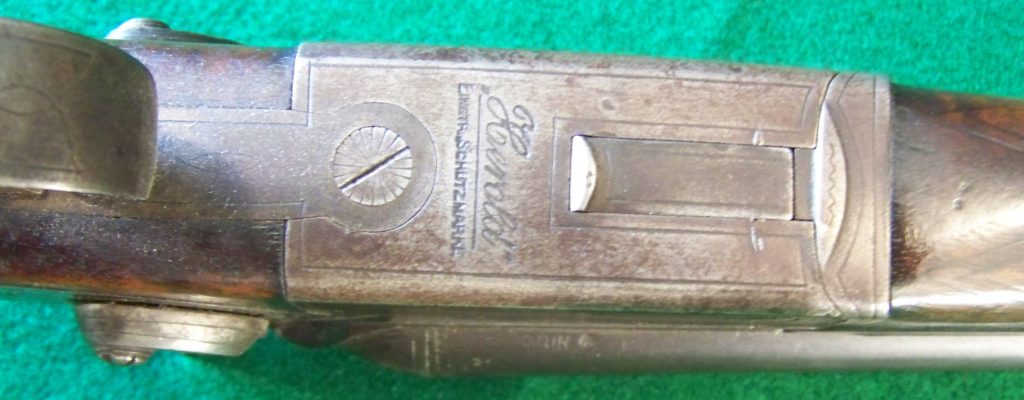
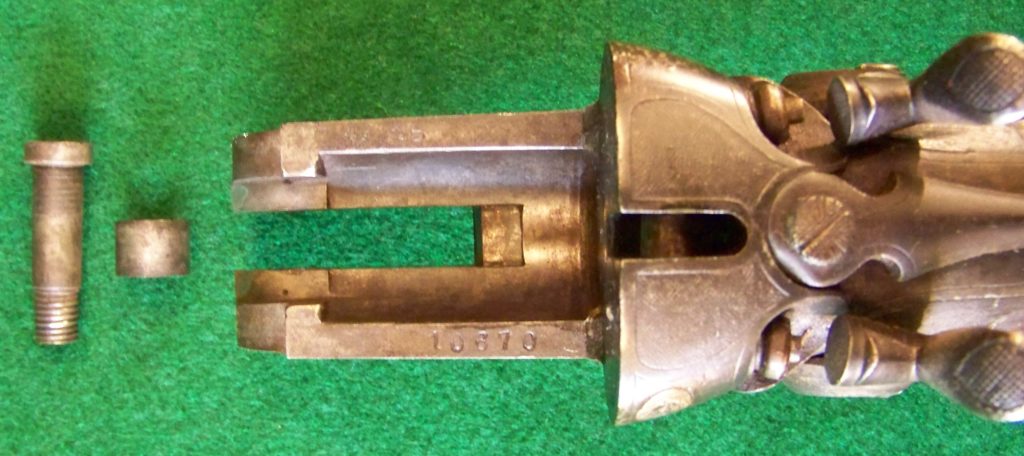
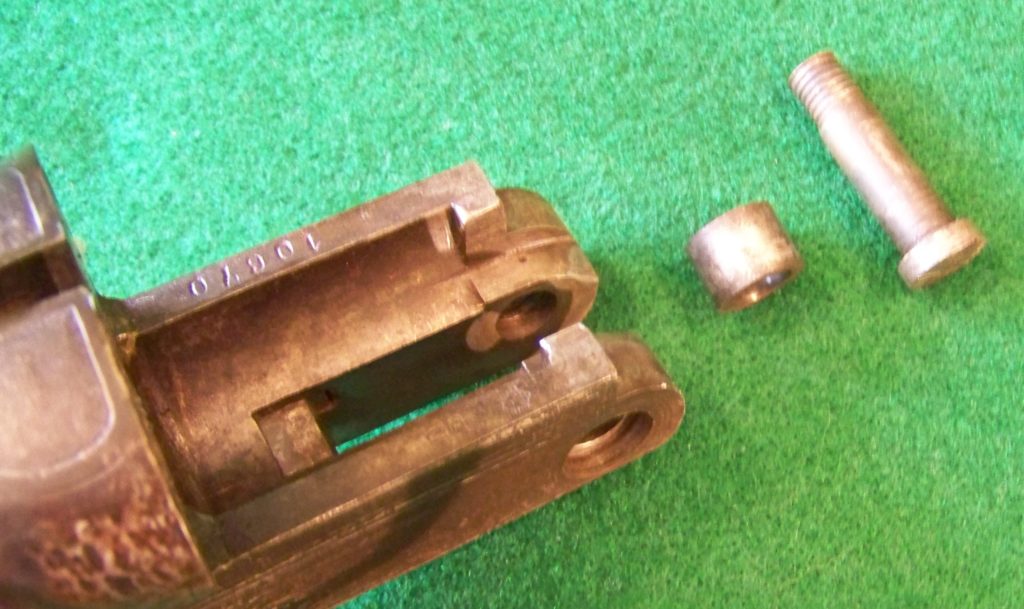
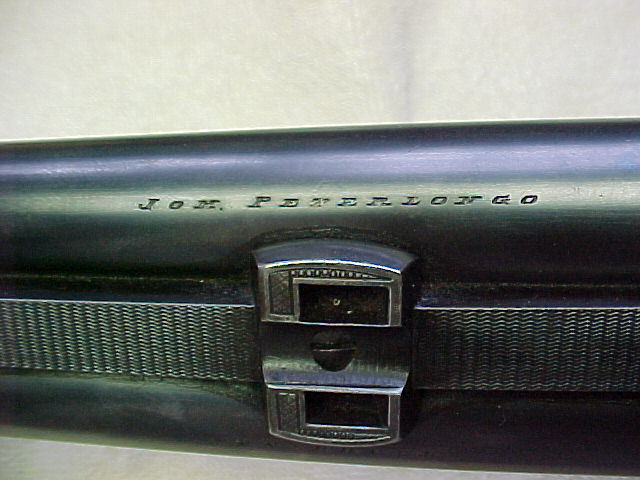

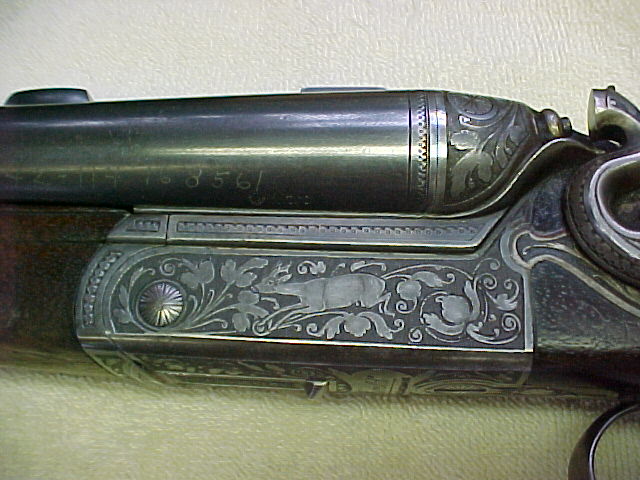


In the 1910/1911 Franz Jäger catalog he listed a Dreilauf Flinten or Three Barrel Shotgun. Following is the listing from that catalog and images sent by a gentleman of his Jäger three barrel 16 ga. Shotgun.
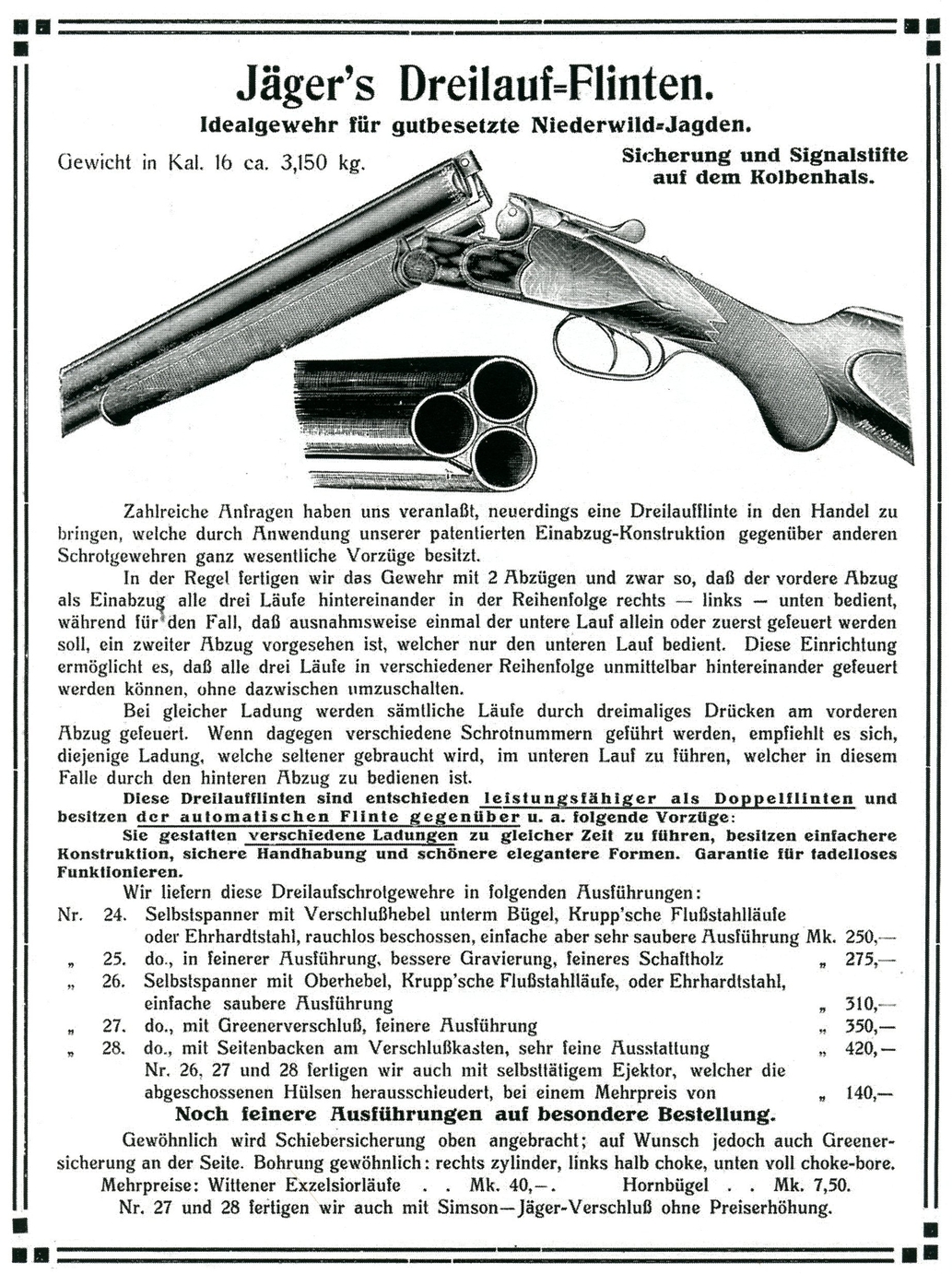


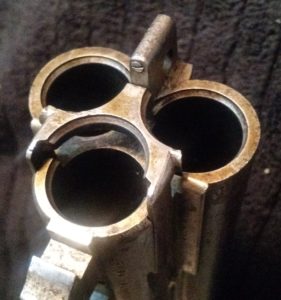
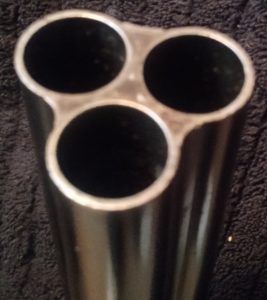
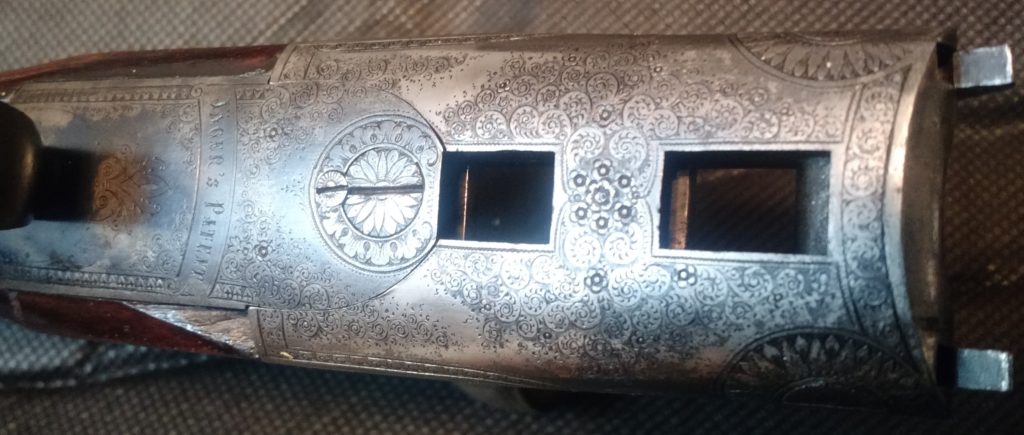
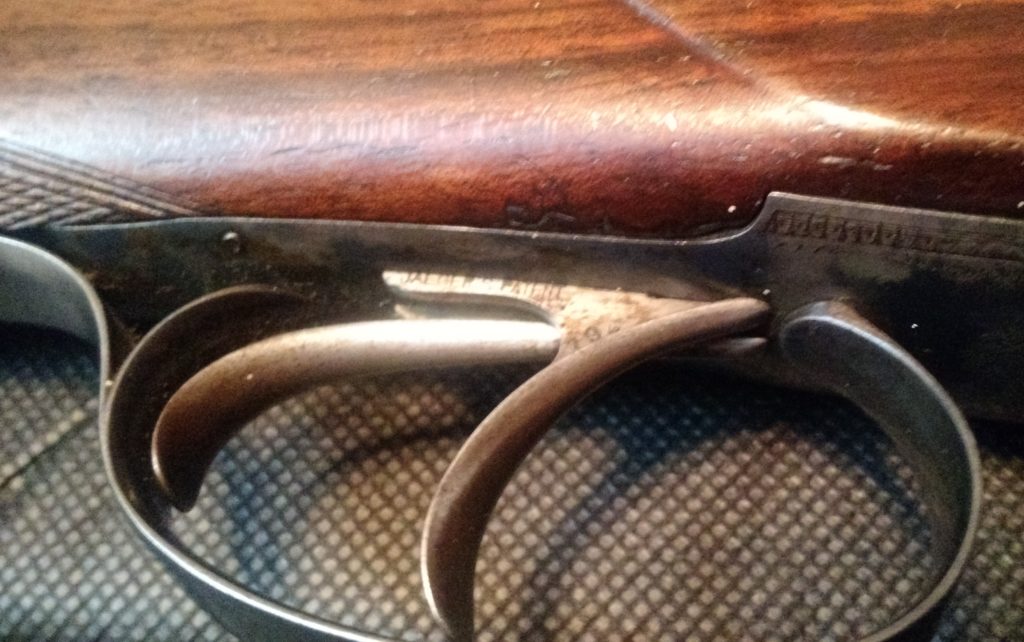
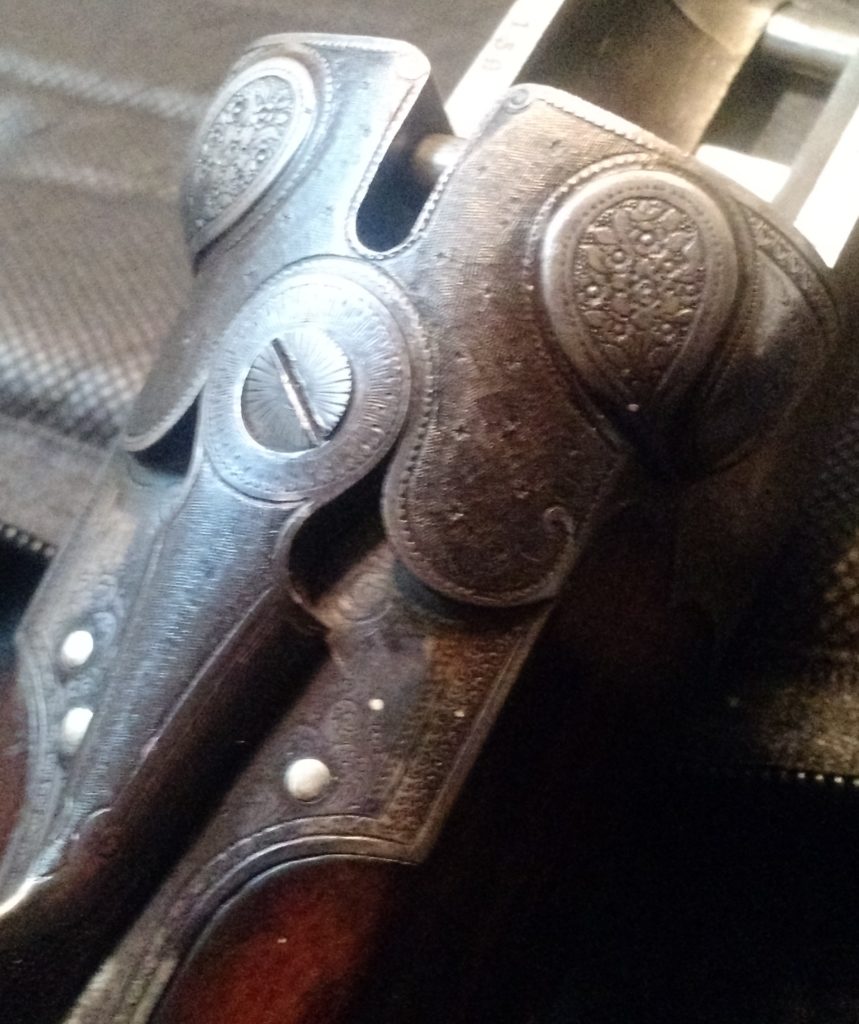

The following image is courtesy of the James D. Julia Auction Co.-

The following images are from an unknown source and were found in Dietrich’s email attachment collection. They show a Franz Jäger side by side shotgun made during the Buhag era for Paul Jaeger in Jenkintown, Pa.



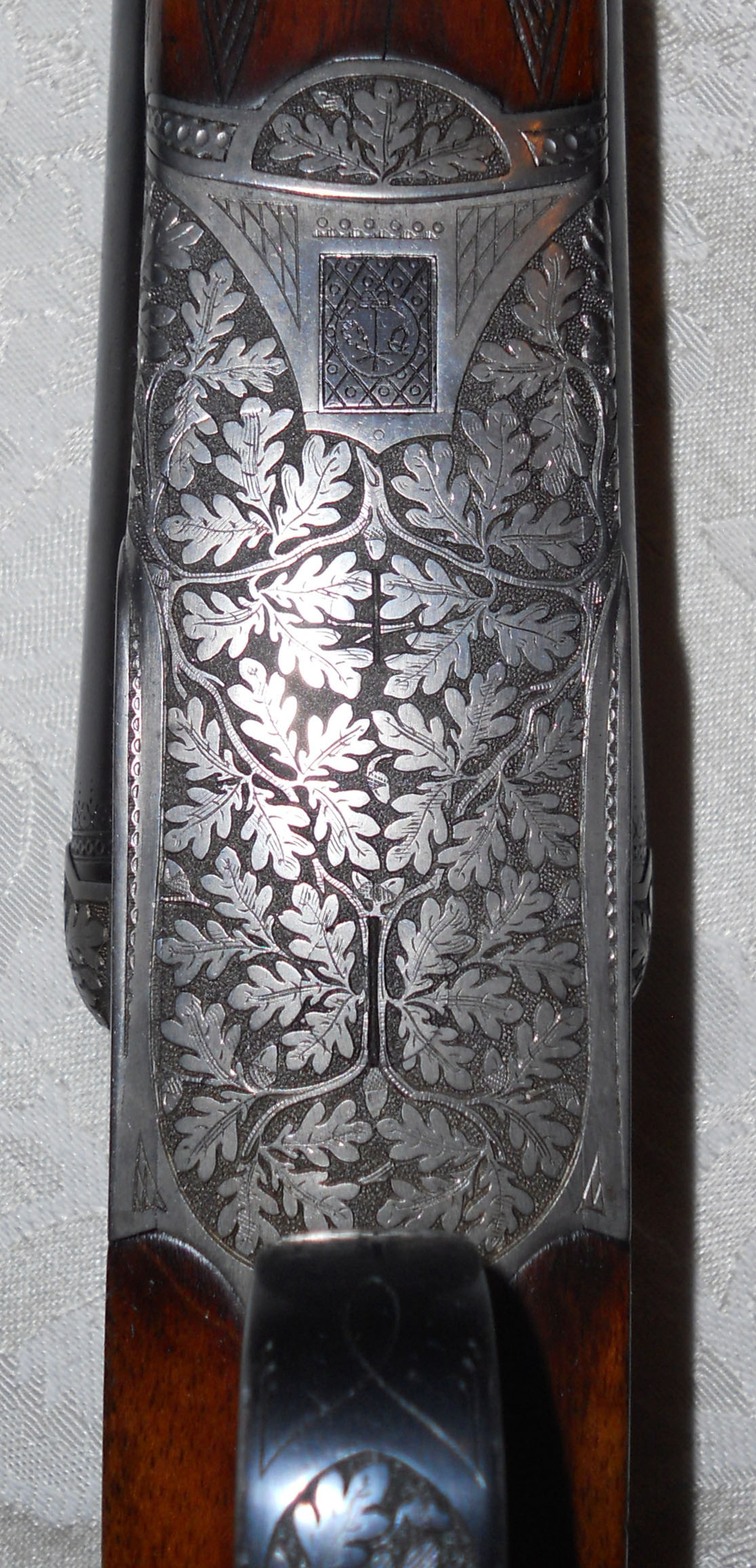
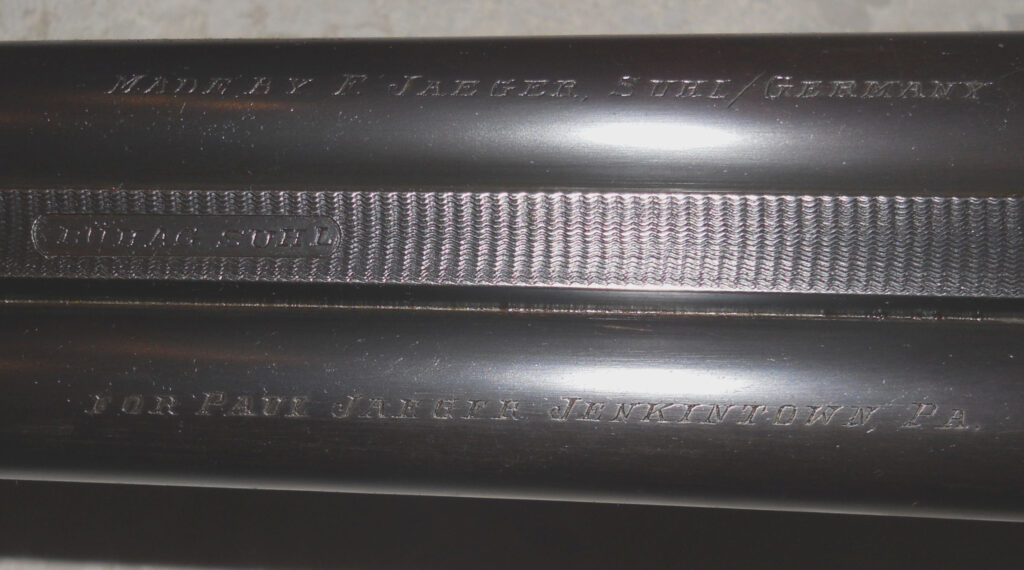

The following advertisement for Karl Körmes in Leipzig is included here because it shows that the Simson-Jäger Verschluss was widely sold by other dealers around Europe. It appeared in the 1905 edition of Deutsche Jagd und Deutsche Fürsten by Fritz Frenzel.
